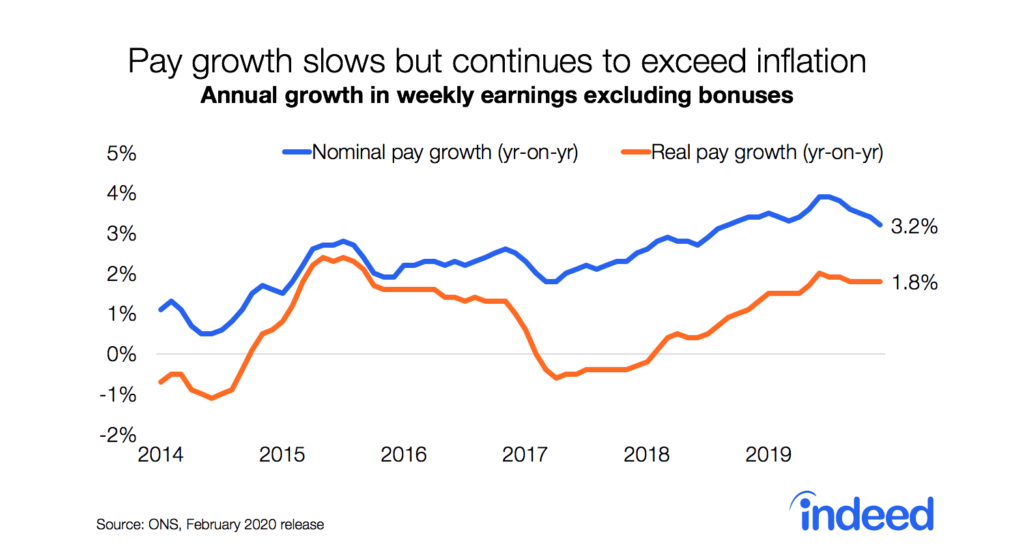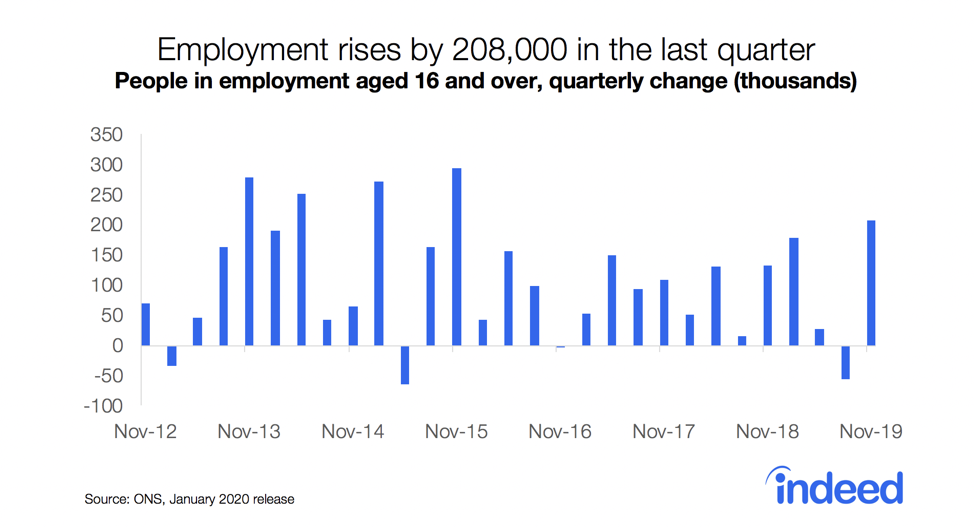Key points
- The August 2021 Indeed UK Job Search Survey found no sign of an uptick in search urgency, suggesting hiring challenges will persist.
- Many of those on furlough still expected to return to jobs, while many unemployed people continued to rely on financial cushions.
- Young people ages 18-24 were searching the most actively, suggesting job recruiters may want to focus on this group.
- Most people said they wanted their next job to be in a different field from their current one, which means sector switchers could be another potential source of hires.
Demand for labour in the UK continues to grow apace, resulting in hiring difficulties in a number of sectors.
To help understand the UK’s labour market dynamics, the Indeed Hiring Lab surveyed 5,000 people in mid-August, ages 18-64. The sample included both individuals in and out of the labour force, taking in employed workers, those on furlough and the jobless.
The latest survey findings echo those from July, with most people still not in a rush to find a new job. That suggests employers struggling to fill positions could well continue experiencing shortages of candidates in the near term.
Still little sense of urgency to find work
There was little indication that people were ready to meet the current strong demand for labour. Just 7% of respondents said they were urgently looking for a job in August, while 17% said they were searching without urgency and 28% were passively searching. These proportions were virtually identical to those from the July survey.
Even among the jobless and those on furlough, there was no great sense of urgency to find work. Around 57% of those out of work and 44% of those on furlough said they were not open to searching, little changed from 56% and 41% respectively in July.
The most common reason for those on either partial or full furlough not to search, cited by 49% of respondents, was because they expected to return to their jobs. With the furlough scheme finishing at the end of September, these people will soon know whether that will happen. A further 16% of furloughed respondents said they didn’t feel comfortable working at an in-person job due to COVID-19 concerns.
Unemployed people still able to rely on financial cushions
Among the unemployed — defined as jobless people actively searching for paid work — financial cushions were still a major reason they weren’t urgently looking for work. Around 26% of unemployed people who were not urgently looking said they had a financial cushion sufficient for some time, only slightly down from 30% in July. The household savings rate has jumped in the pandemic period, standing at 19.9% in the second quarter of 2021, its second-highest on record.
The young were searching more intently than the old
Among those searching for a job, respondents 18-24 seemed keener to find work than older age groups. Some 17% of those 18-24 looking for a job said they were searching urgently, a higher proportion than among older cohorts. A further 46% said they were actively looking but without urgency, again higher than among older groups.
The most widely cited reason for searching urgently among already-employed people 18-24 was insufficiency of their existing hours. By contrast, every other age group said it was because their wage or salary was too small.
Among those 18-24 not working, 32% said they weren’t searching urgently because they were new entrants to the job market, the most frequently reported reason. A further 21% said they wanted to relocate.
People still want to wait for more job opportunities
When survey participants were asked when they would like to start a new job, 31% said when more job opportunities were available, similar to July’s 33%. Though vacancies are at a record high, people still feel current opportunities may not be ideal matches for their experience and interests, and that better options may yet arise.
Among other frequent responses, 19% said they preferred to begin a new job after taking holiday or time off, while 11% said when the new school year starts.
People are interested in exploring new careers
Many respondents were open to switching fields. When asked where they want their next job to be, the most frequent answer, at 28%, was in a field related to their current one. Around 27% wanted a job in their current field, while 19% preferred something totally different from work they had done before.
While there are always people considering changing careers, the pandemic has accelerated certain structural changes in the economy and prompted some to reflect on their career choices. The fact that a majority of respondents want their next job to be outside their current field presents an opportunity for employers to tap into new candidate pools.
Conclusion: lack of urgency poses challenges for those needing to hire
There was little sign of urgency in job search in the August Indeed Job Search Survey. The looming end of furlough and summer holidays may cause some uptick in search, though most people seem to feel they can still be picky over jobs.
Employers struggling to hire might consider turning their attention to specific pockets of jobseekers. Some might want to focus on youth. Though the reopening of customer-facing service sectors has brought many more opportunities for the young, they still seem to be searching for work with greater earnestness than older age groups.
Sector switchers could be another source of potential hires. A majority of respondents said they wanted their next job to be in a different field from their current one. Some employers may be able to bring in staff by selling the benefits of their company and sector, and offering training to those from other backgrounds.
Methodology
This blog post is based on an Indeed UK online survey conducted 9-17 August of 5,000 UK adults 18-64. Weights were applied to each survey to match respondent distributions across age, gender, region, education and ethnicity based on data from the Office for National Statistics.
Unemployed workers are defined as those who are jobless and actively searching for paid work, either urgently or not urgently. Jobless respondents passively looking for work or not open to work are not included in the unemployed category, but are considered out of the labour force.






